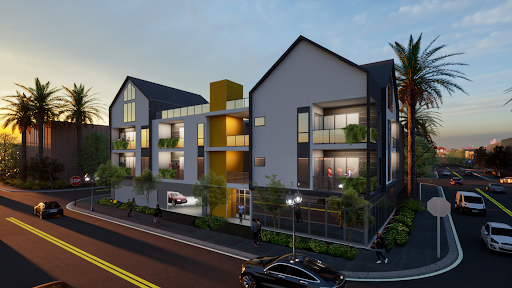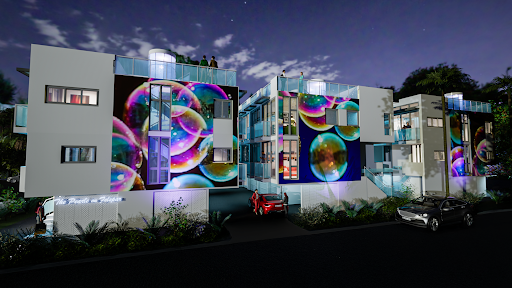Building Smarter, Greener And More Profitable: Elizabeth Carmichael On The Benefits of Eco-Friendly Development

As urban developers search for new ways to meet housing demand, a quiet but powerful shift is happening in how projects are conceived, and it's being led by voices like Elizabeth Carmichael, founder of THE LAB SD (Living Adaptive Build - Sustainable Developments). Once an advocate who had to push eco-consciousness into the design conversation, Carmichael now finds developers actively seeking her out with a new question: "How can I build sustainably and still hit my return on investment (ROI) targets?"
The answer, it turns out, lies in a blend of neuroscience, design psychology, and a sophisticated understanding of materials and site planning. And perhaps most critically, it also lies in data.
"When I first started, I had to really push people toward sustainability," says Carmichael. "Now, they're coming to me. Developers are asking, 'How do I make this project greener, but within budget and with good returns?' The winds have changed."
Carmichael is not alone in seeing this shift. A 2018 analysis reviewed 42 studies on green-certified buildings and found that green certifications yield a 6% rent premium and a 7.6% sales premium. For developers focused on the bottom line, that kind of return is hard to ignore. The founder adds, "If residents feel healthier, are happier, and more connected to their space, they stay longer. That means lower turnover, fewer vacancies, and ultimately, a more stable, profitable asset."

Carmichael's passion lies in biophilic design, which integrates natural elements into built environments in ways that positively affect the human mind and body. At THE LAB SD, that means designing buildings not just for code compliance or efficiency, but for well-being.
"We think about the five senses in our design process," she explains. "Natural textures, calming smells like lavender or rosemary, soft lighting, and even the sound of birds or water, all of that stimulates the brain in a positive way. We now have neuroscience to back this up."
One member of Carmichael's team, Arkar Hein, is a graduate neuroscientist, helping guide decisions that affect mental health and cognitive performance. Whether it's placing windows to maximize natural light or incorporating fragrant plants to promote calm, these details become part of an immersive strategy for occupant wellness.
Another cornerstone of THE LAB SD's approach is passive site design, a method that considers wind, sunlight, noise, and topography before a single foundation is poured. "We start with site intelligence," says Carmichael. "Where's the sun? Where's the wind coming from? Is there freeway noise? How can we orient the building to maximize natural ventilation and minimize heat gain? All of that reduces energy costs while improving comfort."
On one current project near a freeway, Carmichael's team is exploring how building placement and landscaping can buffer sound and redirect views, turning a potential drawback into a design strength.
Eco-conscious development doesn't stop at passive strategies. THE LAB SD also advises developers on material choices that reduce the carbon footprint without compromising structural integrity. "We work closely with engineers and consultants to guide material selection," Carmichael says. "There are lower-carbon concretes available, and mass timber can often replace steel while offering great strength and better environmental impact."
Of course, all choices must align with code requirements and structural needs, but Carmichael emphasizes that sustainable options exist at nearly every step of the construction process. What's more, those choices don't just benefit the planet; they future-proof the building against rising regulatory and insurance demands.
At its core, THE LAB SD champions what Carmichael calls 'adaptive build.' This means more than flexible floor plans or modular systems; it's about building with awareness: of people, place, and purpose.
"We know how to build a box," she says. "But how do we adapt that box to the environment, to community culture, to the available technology, and to the climate pressures of the future?"
This philosophy permeates all aspects of THE LAB SD's work, from entitlements and stakeholder communication to sustainability integration and post-occupancy performance tracking. The firm's holistic services allow developers to move from vision to execution with sustainability baked into every phase.
Perhaps the most telling sign of change is that developers no longer see sustainability as a luxury but as a competitive advantage. "We're seeing this groundswell of interest," says Carmichael. "People are realizing that going green doesn't mean giving something up. It means adding value to the project, to the occupants' lives, and to the planet."
As the demand for housing continues to rise, THE LAB SD's model offers a path forward: one where growth and stewardship go hand-in-hand, and where ROI is not sacrificed, but strengthened by thoughtful, ecological design.
For Carmichael, this is more than a business trend; it's a legacy. "Every project we touch has the chance to have a positive effect on the occupants, the community, and the planet. That's the kind of return that lasts."
Media Contact
Name: Elizabeth Carmichael
Email: info@thelabsd.com
© Copyright IBTimes 2025. All rights reserved.



















